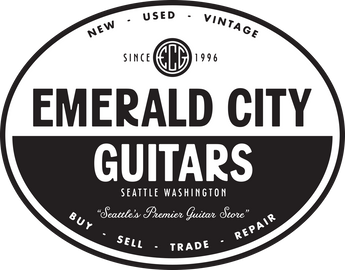1952/57 Gibson Les Paul Conversion
If you’re ever in the mood for an internet dustup, just log onto your favorite guitar forum and take a hard stance on the morality of Les Paul conversions. The scuffle that inevitably ensues will put even the most heated political debate to shame.
Is one more ’57 Goldtop worth the dismantling of a historically relevant (albeit less playable) ’52? Not to mention the period-correct hardware and PAFs that need to be sourced from other models. The toll mounts. The good news for us, though, is that our community’s tradition of frivolous guitar modification long predates this dispute. Accordingly, it has left us a small but considerable number of previously bastardized classics with which we can play out our fantasies in a relatively guilt-free environment.
Instruments like this are the starting point of most conversions out there, and are certainly the only ones we’d advocate modifying. The power of old wood is undeniable, though, regardless of when the guitar reached its final form. A well executed conversion along with painstaking accuracy in the sourcing of parts (including a killer set of PAFs) make this example the closest thing any of us will get to a ’57 for less than six figures.
1967 Gibson ES-335

What a perfect guitar for us guys looking for Eric Clapton style on an Erik Estrada budget. This isn’t the most original example out there, but in my opinion it’s the modifications that make this one so desirable.
An expertly installed stop bar tailpiece replaced the much-maligned factory trapeze. A fresh set of Grovers sit where Klusons failed before them. A set of NOS “Love” postage stamps adorn the pickguard and bass side of the body, making it a federally recognized fact that this thing has a ticket to ride. It would take a keen eye to distinguish this from a real ’63 without a close inspection, and the original pair of patent number pickups make hearing a difference quite the feat as well. Add in the $.40 of free postage and you’d be losing money if you pass on this one.
1992 PRS Santana Custom 24


Many guitars have niche markets, but this one shoots for a particularly narrow window. This is for the guy who hates capitalism, but not enough to start flying coach. For the guy who smokes weed every day, but only if it falls on a bank holiday. Perhaps even for the Sublime (feat. Rome) enthusiast holding a fresh check from a class action settlement.
This guitar is a double-octave wailer in search of a true Trustifarian. Originally built in a batch of 10 instruments for Carlos Santana, this is a prime example of the quality the PRS custom shop is known for. So whether you manage a successful hydroponics operation, or just run a hedge fund and like to get high, you won’t find a more appropriate guitar anywhere in the world.
1965 Gibson SG

While we’re more fond of Fender custom colors than anyone you’re likely to meet, there is always something a little more interesting about seeing an unusual finish from Gibson’s side of the aisle. To add even more to an already special occasion, this particular SG comes to us from our friend Brian Ray.
Legendary guitarist, songwriter, and all-around great guy, Brian is as much of an expert on white SGs as anyone I can think of. (Check out his signature Gibson Custom Shop SG Jr, finished in Polaris white of course.) SG Specials and Juniors (and Customs, of course) in this unique color come up for sale regularly, but custom color Standards of the era are incredibly scarce. This Vibrola-equipped example is the only one of its kind that I can recall coming across in all my years of guitar geekery. A 100% original custom color SG with rockstar provenance? I can’t imagine a better investment, either for the collector or deep-pocket player alike.
1961 Gibson ES-355

Nothing lends credibility to a top-of-the-line vintage instrument quite like a life of heavy use by a professional musician. This gorgeous 355 has the type of intense honest wear that makes its playability and quality undeniable. This example even has a custom truss rod cover bearing the name of the original owner, “Brad Roy”.
Given the circumstances, I think its fair to say that Brad Roy was one bad boy. The few modifications this guitar underwent are typical of a working instrument of the time. The stereo feature was bypassed to make live amplification less of a headache, and the original pickups were replaced with a set of early patent number Gibsons. If you regularly read our newsletters, you will already have listened to me insist that these early patent numbers are every bit as good as the coveted PAF. Complete with original hardshell case, this blue-chip Gibson is ready for the next chapter of its life as a discerning musician’s daily driver.




